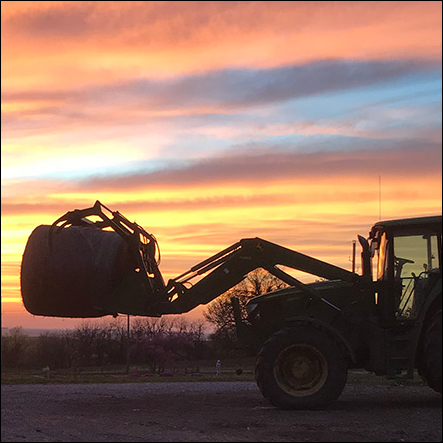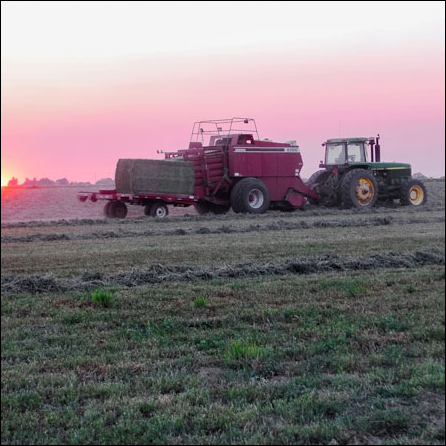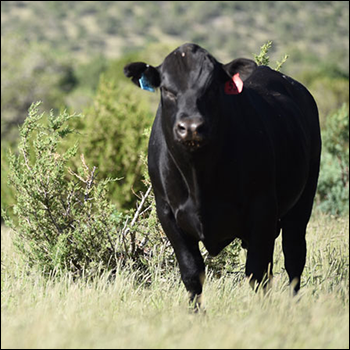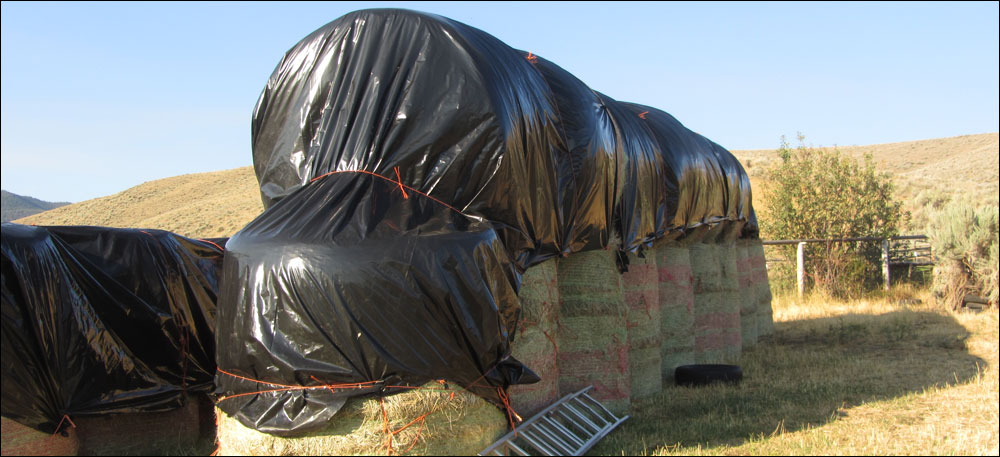
Handy Quick Fix for Hay Tarps
Create a strong, windproof covering with these tips.
Tarps of black plastic work well for covering and protecting haystacks when you don’t have a hay shed. When a person goes to the trouble to grow and put up good-quality hay, it pays to protect it from weather and prevent damage and mold. We cover our haystacks with tarps or big strips of durable black plastic, which lasts several years and can be reused for the next hay crop.
The biggest enemy of a hay covering is wind. Unless the tarp or black plastic is tied down securely, wind can whip, beat and wear holes or tear it. Sometimes it can even tear out the grommets in a tarp. Black plastic has no grommets. You have to create an “ear” to secure a rope or twine to it for tying it down.
Any tarp or covering must have a reinforced place for securing a tie. A simple hole will always tear and pull out. Some tarps have better reinforcements, like stronger grommets, but those can still occasionally tear out. Then you must create another place to secure your twine.
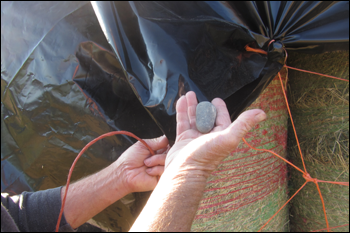
To make secure “ears” on black plastic, the best way we’ve found is to use a small, smooth rock folded into the material, with the twine tied tightly around the rock. |
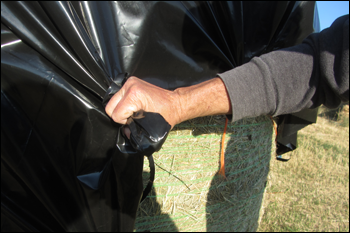
Place the rock on the plastic where you want to tie twine. Fold the plastic up over the rock so it is completely engulfed and covered. |
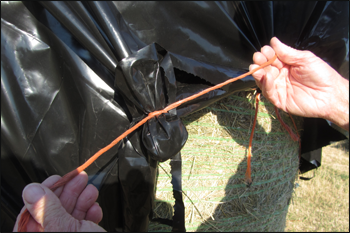
Tie one end of your twine securely above the rock, in the small “neck” above it, using a square knot or any other knot that will hold and never slip. |

Tie the other end to the bales (below the plastic), tying it to net wrap, bale twines, or to big tires on the ground next to the haystack. |
Black plastic is strong and durable. However, it will always tear if you create a hole in it for tying. It is so slippery it’s hard to make a good “ear” to hold a rope that won’t just pull off if tension is too great — such as in a strong wind.
To create a new holding spot on a tarp with a ripped-out grommet, or to make secure “ears” on black plastic, the best way we’ve found is to use a small smooth rock folded into the material, with the twine tied tightly around the rock. This creates a solid, secure lump in the tarp or plastic that will hold the twine. If you don’t have any small rocks — a situation hard to imagine in our Western part of the country — golf balls will work.
To create a secure ear, place the rock on the plastic where you want to tie twine. Fold the plastic up over the rock so it is completely engulfed and covered. Then tie one end of your twine securely above the rock, in the small “neck” above it, using a square knot or any other knot that will hold and never slip. This will keep your twine secure. It can’t pull off over the lump created by the rock, and it won’t tear out.
Tie the other end to the bales (below the plastic), tying it to net wrap, bale twines, or to big tires on the ground next to the haystack.
To keep the wind from getting in under the covering — the main reason a covering gets torn off a stack — we tie it down in many places. We use all the grommets in a tarp, and sometimes create more tie spots if the grommets are too far apart or not in the right place. If we’re using black plastic, we create many “ears.”
With big round bales, we make long rows, usually two bales high, with adequate space between the rows, so we can tarp each row by itself for shedding rain or snow, rather than having the rows touch one another. Putting a big tarp or black plastic over multiple rows creates valleys between rows, which collects water and snow and creates ice chunks when it freezes. This makes it difficult in winter to get the covering off when uncovering the bales to feed.
Black plastic is better than most tarps for shedding moisture and snow because it’s slippery, and it collects heat from the sun. Snow melts and runs off. It can be reused many times, lasting longer than most tarps. Slicing quickly and easily with scissors or knife, it can be cut to fit the width you want. It’s easy to make your own grommets by creating “ears” with rocks inside them.
As double insurance against strong gusts of wind, we also run a rope or long twine over the top of the stack in multiple places to help hold it down. It’s easy to throw a small rope or long baling twine over the stack if you tie a small rock to the end you are throwing over. This helps it arc over the stack and keeps a breeze from interfering with your toss. Then you can tie it down securely on each side. With solid “ears” and a few tie ropes over the stack, tarps or plastic can withstand tremendous wind without tearing or blowing off.
Editor’s note: Heather Smith Thomas is a cattlewoman and freelance writer from Salmon, Idaho.
